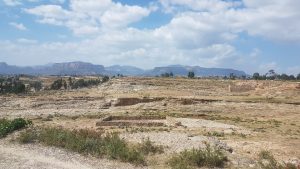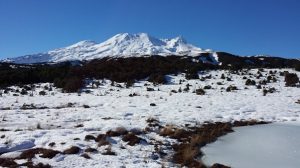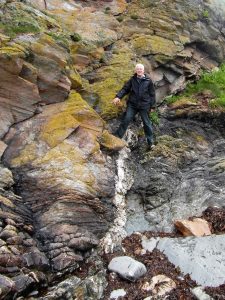Earlier this month I spent a couple of my Sundays walking in the Brecon Beacons, enjoying some lovely winter sun. The clear days and bright sunshine provided perfect walking conditions and meant spectacular views of the surrounding countryside could be enjoyed from the top.
Pen y Fan is the highest peak in the Brecon Beacons, standing at a height of 886 m. It is made up of layers of Devonian Old Red Sandstone. The summit is composed of resistant sandstones from the Upper Old Red Sandstone Plateau Beds. They were deposited in the late Devonian (370 million years ago) and represent a time of marine transgression in the area. These beds lie unconformably on Lower Old Red Sandstone ‘Brownstones’ and ‘Senni’ Formations respectively. These formations consist of sandstones interbedded with mudstones and were created by river flooding events.
The lake seen below the summit called Llyn Cwm Llwch “dusty valley lake” and the mounds of moraine which surround it, were created by a small glacier that existed around 12,000 years ago. The glacier grew in the cold North Western side of the mountain, protected from the sun and wind by the summit of the mountain. This allowed snow to accumulate and turn into glacial ice which eroded the rock creating the cirque seen today.
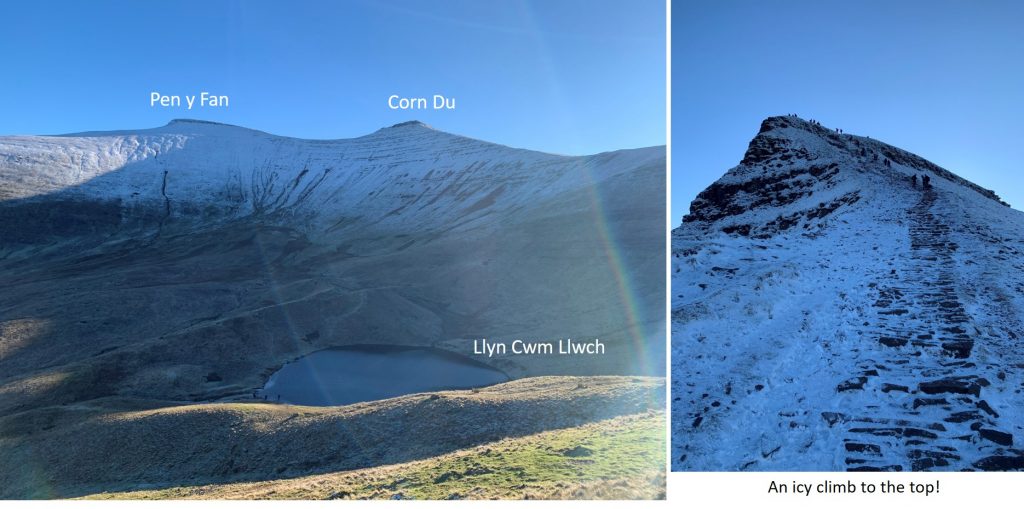
Sugar Loaf mountain, which stands at a height of 596 m, is comprised of the Devonian Old Red Sandstone Senni and Brownstones Formations. They are topped by the late Devonian Quartz Conglomerate Group (equivalent to the Plateau Beds), which makes up its summit.
For more information on the geology of the Brecon Beacons, why not try the BGS igeology app here.
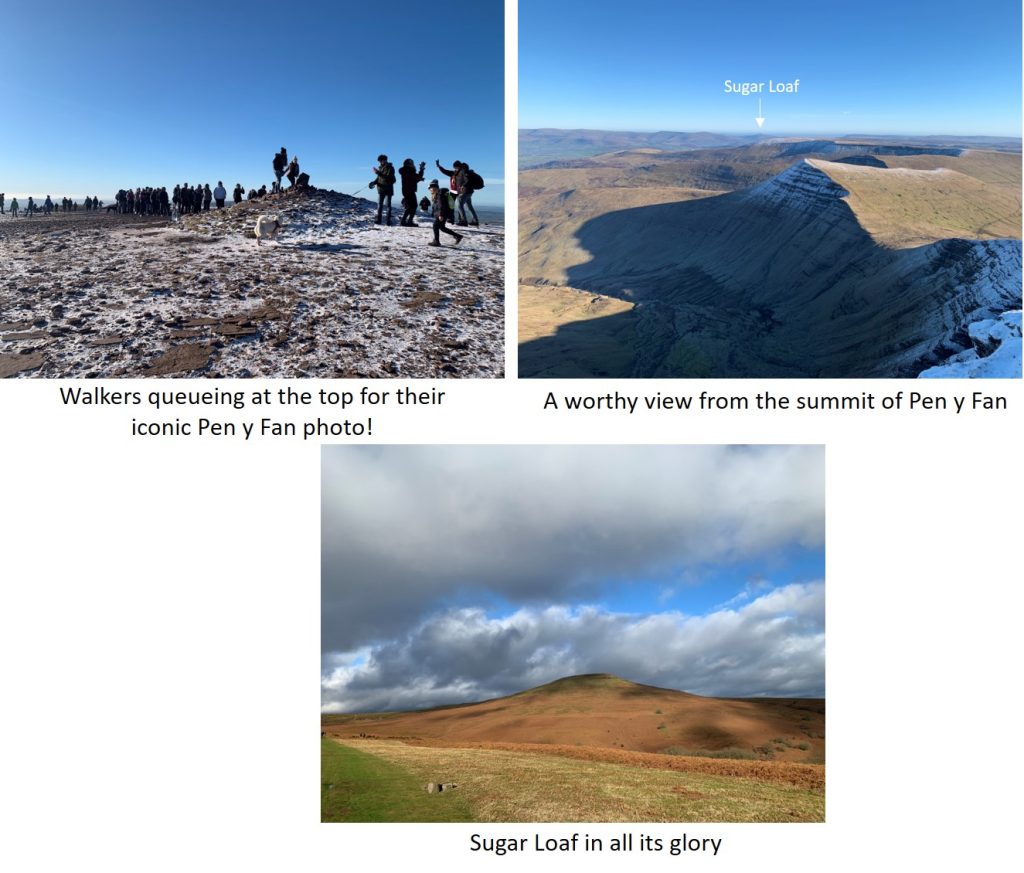
The icy conditions made walking a little tricky at times but the stunning views from the top were well worth it! See what geology you can spot on your next walk out in the countryside.
By Georgina Lockham

